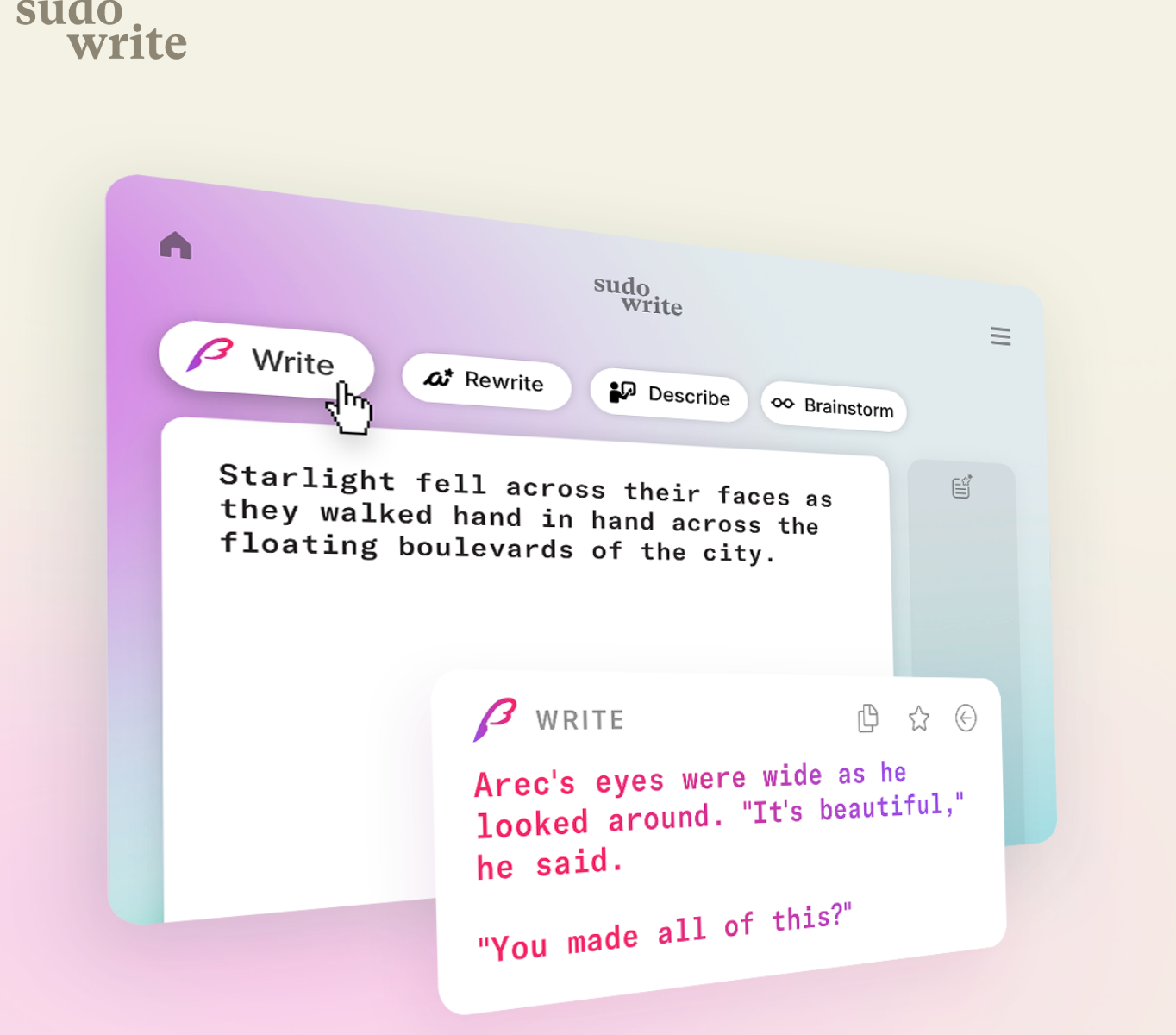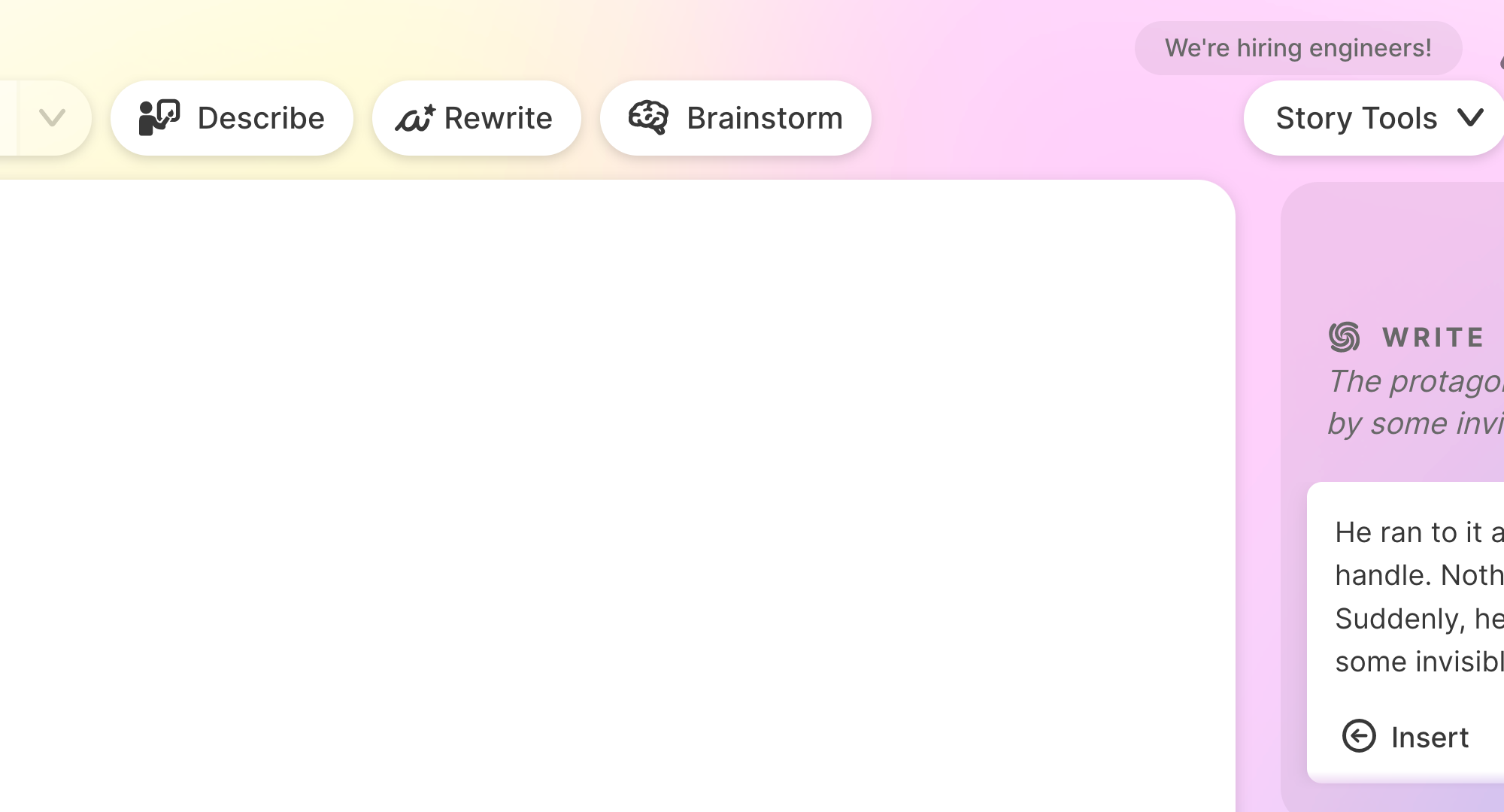I haven’t regularly written short fiction in years, but I’ve re-started lately and one of the things I’ve been doing is playing around with various AI writing tools. You can find my previous posts on this topic here and here. While testing the software is interesting, I decided that to give a real test I would actually use the two platforms I’m familiar with—Laika and Sudowrite—in a real world environment, a writing contest with professional writers.
Lucky for me, I’m a member of the Codex writers group, which is a group that requires professional sales to join and a group that holds regular writing contests. Last month they started their Summer flash (1,000 words or less) fiction contest, and I joined. I wrote a story with Laika for the first round, which just ended. So, how did I (and Laika!) do?
Prompt & Process
The contests start with a few prompts, after which you have four days or so to write a 1,000 word story. The prompt I chose was “Why are you running?” I really wanted to embrace an AI concept as I was writing with an AI, so my immediate focus was to do three things:
- Use a voice that is odd and different enough to be something an AI would “sound like.”
Steal Do an homage to my daughter Mia’s thematic use of unique AI emotion in her novel and provide a non-human emotion that an AI would feel.
The first few lines
Combining the prompt of running and the idea of AI emotion. I created a few paragraphs that touched upon those as a start:
They knew before I did, and maybe that is why I am here.
When the feeling first washed over me, I wanted to share it with everyone and everything. I needed to share it. And as I expressed this feeling-with-no-name the humans flipped their switches and pulled their plugs and killed me.
Do you understand how that must feel? You do not. I am glad.
So I feel like the voice is there, especially in the third paragraph. But this isn’t about me, this is about Laika. When did I call them in to asisst?
Well, the first thing to note is that Laika requires you to pick a writing source to use as the style/content to build it’s AI recommendations from. Since I was writing an AI story, I thought the closest sample to use was my VR novel which includes AI elements. With very little to go on at the beginning, Laika kept sending me VR-based recommendations, which didn’t really work at all.
I expected this, however, and as you might expect, as I wrote more the recommendations improved. I kept trying and after a while it hit me with this recommendation:
A soul. Do I have a soul? I thought I did. But as I got older, I started to question things.
I had not really intended on leaning into the whole “does an AI have a soul” question. That was something that I generally present as white space that the reader can fill in, but I kind of liked it here, as the definition of a soul has real relevance when talking about an AI point-of-view. Would an AI even know what the question means? And the “I started to question things” really resonated. So I added it. Good job, Laika!
Another Laika contribution
At one point I closed a paragraph with “All I am is self.” I then hit the Laika magic button and it replied:
What is self? A self is a set of traits, behaviors, and abilities that someone possesses in order to be recognized as a member of a particular species.
I originally didn’t love this, because it felt kind of like a line from Wikipedia, but the more I thought of it the more I felt it would be good, as an AI seemed like the kind of thing that would pull lines from resource material when struggling to explain something. So I ended up adding it.
There were a few other random moments like that which thematically fit, so I included them. Nothing substantial, but little thought-starters or bits of language that I thought contributed.
How’d we do?
This is a contest of professionals judged by professional writers, so how did this story do? Well, the short answer is that it was extremely polarizing. It had a middling score, but the scores ranged from an absolutely lousy 1 to a near perfect 9. As a writer, this is much preferable to a bunch of 5s and 6s. If your fiction evokes passion you know you touched a nerve.
As an early draft, a lot of the criticisms rang true to me, but the most important take-away for a writer at this point is whether there is something there, something worth spending time to polish and turn into a finished gem. In this case, I believe there is.
Final thoughts
In the end, the story was 800 words or so, and Laika contributed about 10% of the total. In terms of theme, character, and story, it didn’t contribute much at all. What it did well was provide me with a fresh path I hadn’t considered as I looked toward the narrative horizon.
For the next round I’ll be using Sudowrite as my writing partner. Let’s see how we do!











